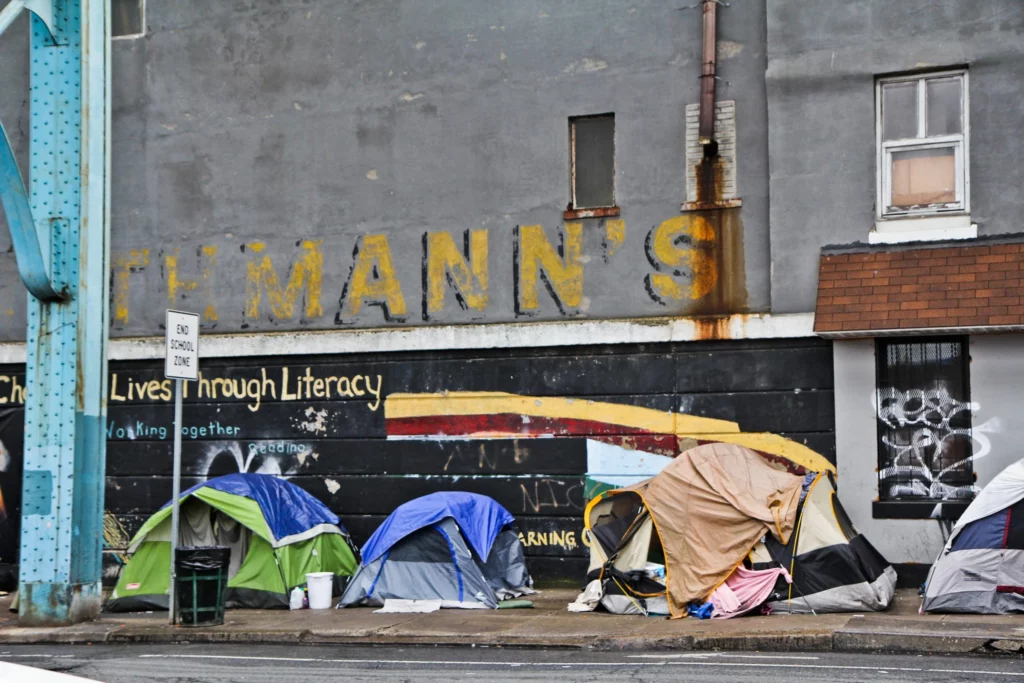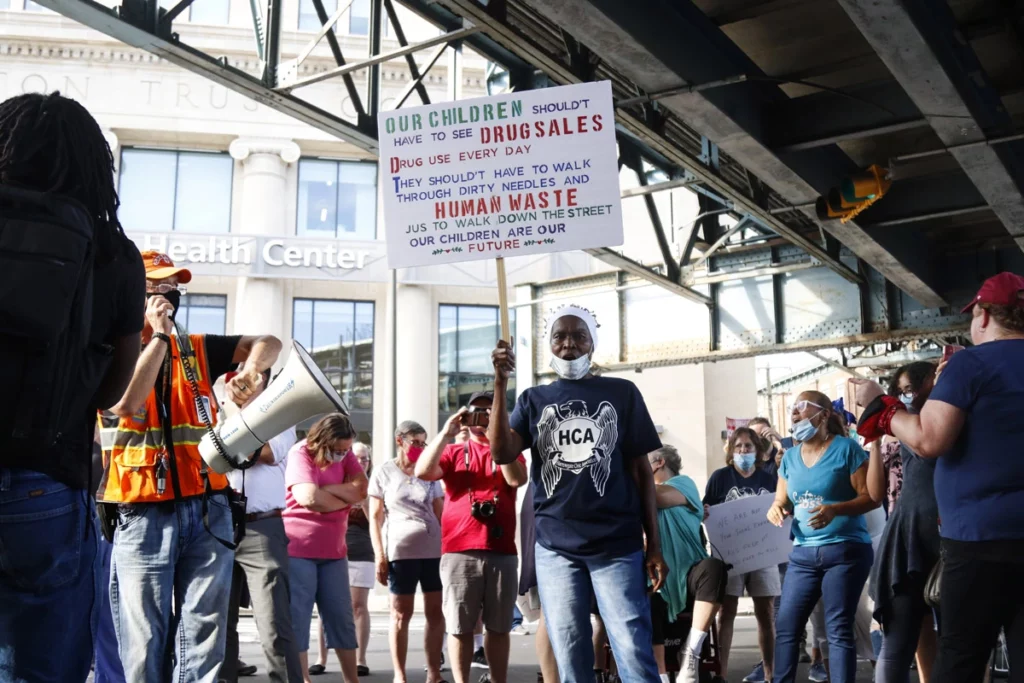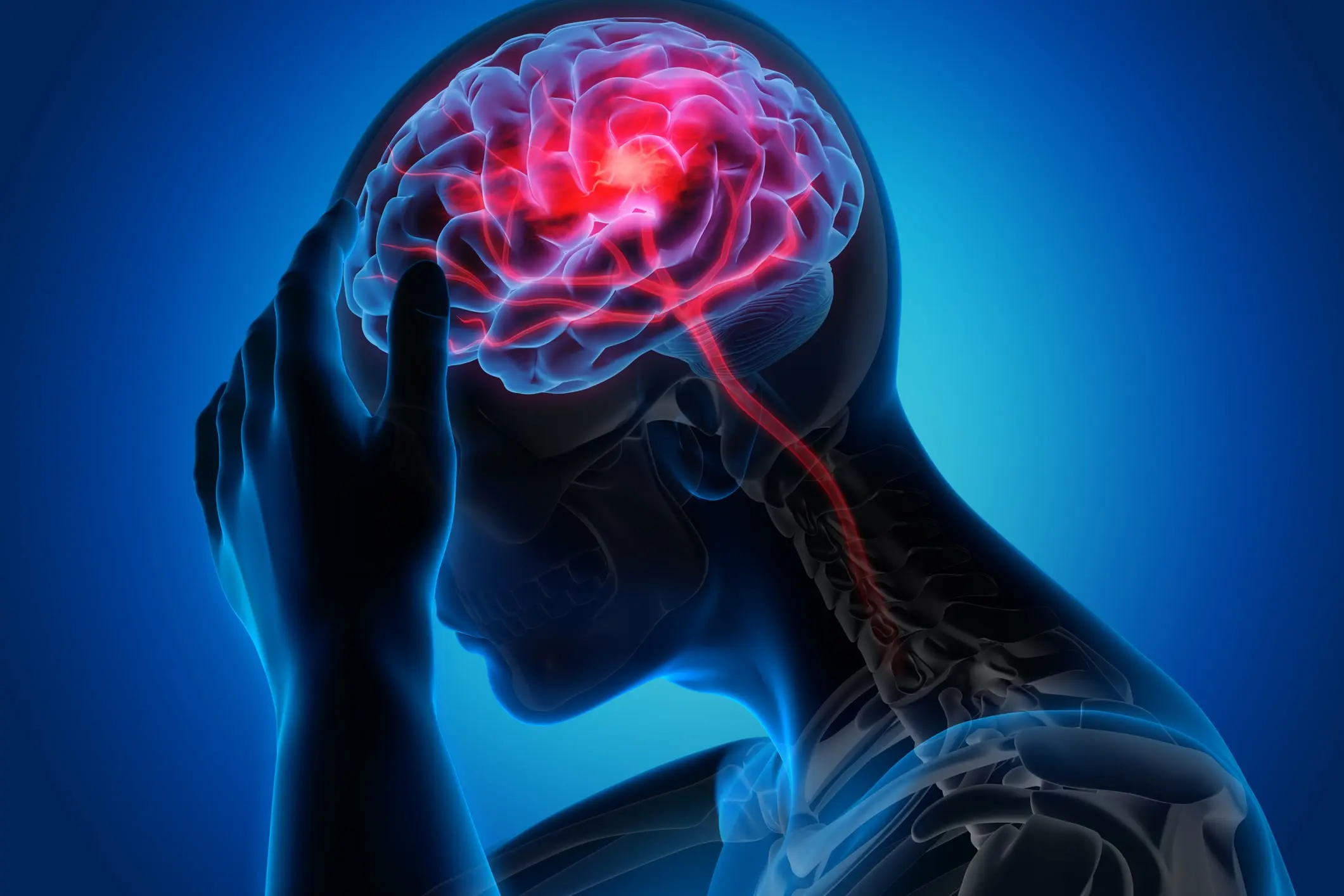Kensington, a neighborhood in Philadelphia, Pennsylvania, was once a thriving center of industry and community spirit, but it is now at the center of a devastating drug crisis.
The drug in question, known as ‘Tranq’ (Xylazine), has seen a worrying increase in usage, and the situation only worsens.
This epidemic is deeply rooted in socioeconomic challenges and complex societal issues, posing a severe threat to the resident’s health and safety and the community’s fabric.
It’s essential to approach this distressing topic with sensitivity, understanding, and hope for solutions to help heal the community.

About Kensington
Kensington is a neighborhood in Philadelphia, Pennsylvania, that has undergone significant changes.
Once a hub of industry with thriving textile mills and factories during the 19th and early 20th centuries, Kensington was a place where hardworking families built a close-knit community.
However, the latter half of the 20th century saw a decline in manufacturing, leading to job losses and economic struggles.
Today, Kensington is known for its drug epidemic, particularly the opioid crisis, which has brought attention to the region’s efforts to revitalize and overcome these issues.
The contrast between Kensington’s industrious past and current struggles highlights the significant transformations the neighborhood has undergone.
The Rise of Tranq in Kensington
The gritty streets of Kensington have been dealing with an alarming increase in the use of a veterinary sedative called Tranq or Xylazine.1
This drug, known for its strong sedative effects, has become more popular among drug users in the area.
Although it is unclear how Tranq became prevalent in Kensington’s drug scene, its low cost and potent high contribute to its rapid spread.
One of the reasons behind Tranq’s rise in Kensington is the neighborhood’s ongoing economic struggles.
The area has long experienced poverty and unemployment, leading some individuals to use drugs to cope or escape their difficult circumstances.
Tranq’s affordability and easy accessibility have made it a desirable option for those seeking a potent high compared to other street drugs.
Tranq’s appeal also lies in its potential to enhance the experience of using other substances.
Its intense sedative effects can create a more potent high.
This combination of economic distress, easy access, and the search for cheaper, potent highs has complicated the drug landscape in Kensington.
However, as Tranq spreads in Kensington, it poses severe risks to public health and safety.
The drug has been linked to severe health consequences and an increased risk of overdose.
Addressing the rise of Tranq in Kensington requires a comprehensive approach that includes education, harm reduction strategies, access to treatment, and community support.


Open Air Drug Market with Homeless Encampments on Sidewalks
Unfortunately, Kensington has become notorious for being an open-air drug market, with a high concentration of drug activity on the streets.2
The area has faced significant drug addiction and homelessness challenges, leading to a visible presence of tents and encampments where homeless individuals reside.
This situation has created a dangerous and chaotic environment, with drug deals occurring in broad daylight and individuals openly using drugs on the streets.
The lack of affordable housing, limited access to addiction treatment and mental health services, and insufficient resources for addressing homelessness have all contributed to this distressing reality.
The impact of this open drug market and the presence of tents on the streets not only affects the safety and well-being of those directly involved but also has broader consequences for the community as a whole, further highlighting the urgent need for comprehensive solutions and support for Kensington.
Factors Contributing to the Epidemic
The Tranq epidemic in Kensington manifests a confluence of multifaceted issues.
The impact of the pharmaceutical industry is evident in this crisis, with aggressive marketing and promotion tactics blurring the lines between patient needs and profit margins.
Overprescription of drugs, including using Tranq for non-veterinary purposes, shows the industry’s overall influence on the situation.
At the same time, entrenched socioeconomic factors worsen the issue.
In a context of poverty, unemployment, and limited healthcare access, residents may turn to the drug trade as a means of escape or economic survival, increasing their susceptibility to drug abuse.
Additionally, cultural and societal influences intensify the epidemic.
Individuals may turn to escapism and self-medication during difficult times to cope with their struggles.
This inclination is often amplified by peer pressure and existing social networks that normalize or glamorize drug use.
These factors highlight the depth and complexity of the Kensington community’s challenge.
| Factors | Details |
|---|---|
| Pharmaceutical industry influence | 1. Role of pharmaceutical marketing and promotion 2. Overprescription and diversion of Tranq from medical channels |
| Socioeconomic factors | 1. Poverty, unemployment, and lack of access to healthcare 2. Vulnerability to drug trade and abuse |
| Cultural and societal influences | 1. Escapism and self-medication in the face of hardships 2. Impact of peer pressure and social networks |
Lack of Police Intervention
The Kensington neighborhood in Philadelphia has been grappling with a troubling lack of police intervention, which has detrimental effects on the city and individuals struggling with addiction.3
This lack of cohesive, successful, community-led policing strategy has contributed to the worsening conditions in the area, characterized by homelessness, drug abuse, and high crime rates.
The shortage of police officers in Philadelphia, with the department being short 1,300 officers, further exacerbates the issue.
As a result, the rampant drug activity, open drug use, and associated problems in Kensington continue to persist without effective intervention.
This lack of police presence and response perpetuates unsafe conditions and hinders efforts to address the root causes of addiction and provide much-needed support to individuals in the community.
The situation calls for a comprehensive approach combining law enforcement strategies, community engagement, and resources to address the city’s and individuals’ underlying challenges in Kensington.

Devastating Consequences for Individuals and the Community
THE PERSONAL CHALLENGES FACED BY TRANQ ADDICTS
The harrowing grip of Tranq Xylazine doesn’t just afflict individuals in isolation; it casts a dark shadow over the entire community.
At the individual level, Tranq addicts grapple with a constantly unraveling life.
Their physical health deteriorates rapidly, not just from the drug’s direct impacts but from the gaping, infected wounds it induces.
Beyond the visible scars, there’s a psychological maelstrom – a vortex of guilt, self-loathing, and alienation.
Relationships crumble, leaving many addicts isolated from loved ones when they need support.
This personal tragedy, echoed in countless lives, reverberates throughout Kensington.
The cumulative strain of these individual battles places immense burdens on healthcare, social services, and public safety systems.
The community, witnessing its members suffer, experiences a shared trauma, eroding trust and diminishing the vibrancy and spirit that once flourished.
THE STRAIN ON HEALTHCARE AND SOCIAL SERVICES
The Tranq (Xylazine) Epidemic has stretched Kensington’s healthcare and social service infrastructures to their breaking points.
Hospitals and treatment centers, already juggling many health concerns typical of urban centers, grapple with an alarming surge in Tranq-related cases.
Emergency rooms are inundated with overdose patients and those presenting with horrific drug-induced wounds, diverting resources from other critical cases.
Concurrently, the psychological ramifications of Tranq addiction manifest in a significant uptick in mental health emergencies.
Despair, anxiety, and the traumatic impact of addiction exacerbate an already strained mental health support system, necessitating increased interventions, counseling, and therapeutic services.
This physical and psychological dual strain underscores healthcare professionals’ multifaceted challenges and highlights the pressing need for bolstered resources and innovative solutions.
COMMUNITY-WIDE EFFECTS
The ripple effects of the Tranq Xylazine epidemic are felt deeply throughout the entirety of Kensington, casting a somber pall over its streets and neighborhoods.
Foremost, as desperation meets addiction, there’s a palpable uptick in crime rates.
From petty thefts to more serious offenses, the quest to secure the next dose disrupts the community’s sense of safety and trust.
Once bustling with activity, public spaces are now cautiously approached as public safety concerns dominate discussions.
Beyond the immediate safety implications, the community grapples with an insidious economic decline.
A significant portion of the workforce, ensnared by addiction, becomes increasingly unreliable or absent from their roles, leading to productivity losses, business closures, and a general economic downturn.
These intertwined challenges paint a complex picture of a community under siege, where every facet of daily life bears the mark of the drug’s devastating impact.
Tranq (Xylazine) Wounds and Amputations
When misused by humans, Xylazine has a particularly sinister side effect: it induces grievous wounds.
Users often experience severe tissue necrosis at injection sites, leading to open sores that can become deeply ulcerated and are susceptible to infections.
These festering wounds are not just superficial; they penetrate deep, sometimes exposing tendons or bones, and can result in permanent disfigurement.
The presence of these wounds, combined with a depressed immune response due to drug use, heightens the risk of secondary complications such as gangrene or sepsis.
In certain cases, infections may require amputations as a last resort.
This physical manifestation of Xylazine misuse is a chilling visual testament to the drug’s destructive potential, extending beyond internal health and showcasing the tangible and stark external ravages.

Responses and Mitigation Efforts
In Kensington, many groups work together to combat the Tranq epidemic.
Both grassroots initiatives and government actions are being taken to address the crisis.
Community-led efforts support those struggling with addiction and create opportunities for shared experiences and recovery.
Education and harm reduction programs are also being implemented to help individuals make informed decisions and minimize risks.
At the governmental level, resources are allocated to address treatment and prevention.
Law enforcement is shifting its focus to target traffickers and suppliers to stop the flow of Tranq at its source.
Overall, these combined efforts are aimed at overcoming this challenging problem.
Understanding Tranq (Xylazine)
Xylazine, commonly called “Tranq,” is a non-opioid sedative and analgesic originally developed for veterinary use, primarily for sedating large animals such as horses.
However, it has illicitly found its way into the world of human drug use.
When misused by humans, Xylazine can induce effects similar to opioids, including respiratory depression, which can be fatal, especially when combined with other substances.
Its depressant qualities can lead to a slowed heart rate, low blood pressure, and a drowsy state, sometimes leading to unconsciousness.
Disturbingly, it has been found mixed with other street drugs, heightening the risk of overdose and presenting profound challenges for emergency medical intervention.
The misuse of Tranq underscores the ever-evolving landscape of drug abuse and the dangers of using substances outside their intended purpose.
Overcoming Challenges in Combatting the Crisis
Dealing with the Tranq crisis in this Philadelphia city involves more than just addressing the physical effects of the drug.
It requires a comprehensive understanding of the underlying issues and a complete overhaul.
One of the biggest obstacles to overcome is the stigma surrounding addiction.
To solve this crisis, we need to encourage empathy and understanding and see addicts as individuals in need rather than just outcasts or numbers.
It’s essential to create a non-judgmental environment that makes it easier for those affected to seek help.
Additionally, we need to strengthen the treatment infrastructure.
This means increasing the availability of detox and rehabilitation programs tailored to Tranq addiction and ensuring that mental health support is integral to treatment.
Understanding the connection between addiction and mental health is crucial for a successful recovery process and to effectively combat this epidemic in the long term.
The Future of The Opioid Epidemic
The Tranq epidemic in Kensington, PA, is a somber reflection of multifaceted challenges, from pharmaceutical influences and socioeconomic factors to deep-seated cultural issues.
However, the community’s resilient response—encompassing economic revitalization, mental health initiatives, and educational efforts—offers a beacon of hope.
By highlighting success stories, fostering unity, and championing continuous research, Kensington is not only confronting its present but actively shaping a brighter, drug-free future.
With collective determination and unwavering support, there’s a burgeoning hope that the tides of this crisis will recede, unveiling a stronger, revitalized community.
If you or a loved one is struggling with addiction, please get in touch with us at Cornerstone Healing Center in Scottsdale, AZ.
At our addiction treatment center, we strongly believe in using holistic practices to heal internal traumas, ultimately leading to long-term recovery.







